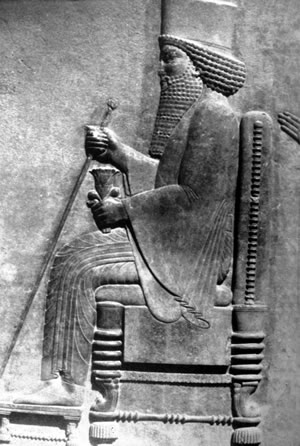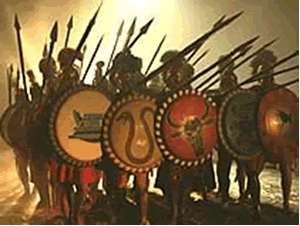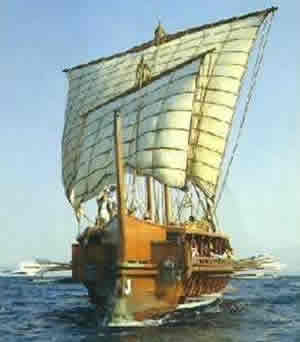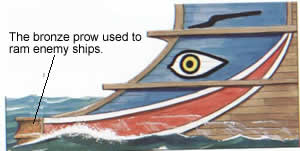Tactics of the Greeks-Spartans
In 480 BC the Persian King Xerxes, pictured on the right, with an army of over 200,000, marched on Greece. At Thermopylae he encountered a small band of 300 Spartans. Xerxes was amused that such a small group of soldiers dared to challenge his superior army. But in the mountains of Thermopylae the huge numerical advantage enjoyed by the Persians was negated by the narrow pass that their army had to negotiate.
Xerxes underestimated the Spartans whose nation was like an armed camp. They knew no trade except for war it was a regime like no other in history dependent on strict discipline and superior training and tactics. The regime was so strict that all new born babies were inspected for disease or abnormalities. If a newborn was sick or malformed it would be thrown from a cliff and left for several days. If it survived it would be taken back and nursed.
From behind their shields the Spartans advanced hurling spears at their enemy.


After two days of fighting the Persian's luck turned as a secret path around the narrow passage was revealed to them by a farmer. This enabled the Persians to come behind the Spartans and encircle them. The time spent by the Spartans delaying the Persian army was well used by the Greek states in preparing for the defence of Greece. The next time Xerxes attempted an invasion was in September of 480 BC. at the Battle of Salamis. His fleet of over 700 vessels was decimated by a smaller number of Greek vessels known as triremes, pictured on the right.
These ships were highly maneuverable and fast. Propelled by oars they did not rely on wind to accelerate towards the enemy.


1) Research the
Spartan way of life.
What made this Greek state so powerful? Discuss.
Who were Sparta's enemies when they were not threatened by Persia?
W hat lead to the down fall of Sparta and the Greek states? Discuss.
3)
Did the Persian Empire ever conquer Greece? Discuss
4) Were there technological advances that assisted the Spartans against the Persian forces or was it purely tactics and superior training? Discuss.
5) Considering that Xerxes' Empire had to be supplied by sea why was the Battle of Salamis so important?